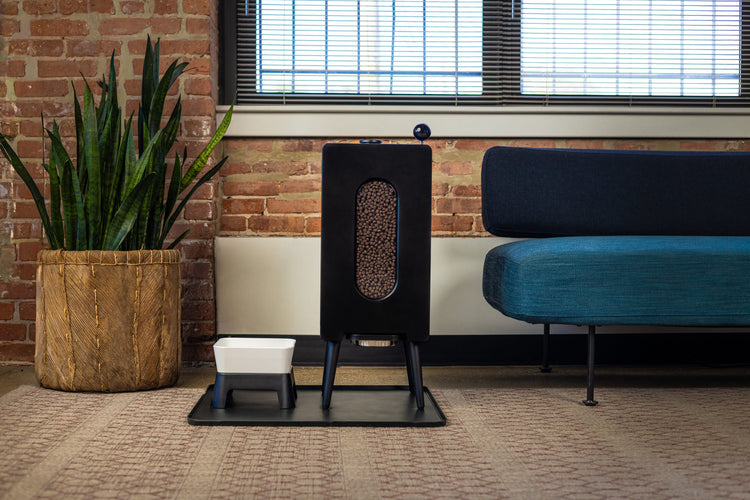Can Dogs Be Allergic to Grain-Free Food? Understanding the Unexpected
- Houndsy
Table of Contents
- Introduction
- What Does “Grain-Free” Really Mean in Dog Foods?
- Can Dogs Be Allergic to Grain-Free Food? Understanding the Allergens
- The Risks and Concerns Surrounding Grain-Free Diets Beyond Allergies
- When Is Grain-Free Dog Food Appropriate?
- What About Dogs That Are Not Allergic? Are Grains Beneficial?
- Practical Tips for Dog Owners Navigating Food Allergies and Diet Choices
- Summary: Can Dogs Be Allergic to Grain-Free Food?
- Frequently Asked Questions (FAQ)
Introduction
Have you ever switched your dog to a grain-free diet hoping to solve their skin irritations or digestive troubles, only to find their symptoms persist—or even worsen? It’s a frustrating scenario many dog owners face, especially as grain-free foods have surged in popularity over the last decade. What if the very diet intended to help your furry friend’s allergies is actually causing new issues? You might be wondering: Can dogs be allergic to grain-free food?
This question digs into a surprising and nuanced problem surrounding our dogs’ nutrition. As devoted dog parents ourselves at Houndsy, we know that feeding our pets should be a simple, joyful ritual—not a guessing game. In this blog, we’ll explore what grain-free food actually means, unravel whether dogs can be allergic to it or its ingredients, and discuss broader implications on canine health, including emerging concerns tied to grain-free diets.
Our goal is to help you make informed choices that improve your dog’s well-being and enrich your shared daily routine. As you read, consider your own pup’s feeding habits and reactions. Could the cause of their discomfort be hiding in their bowl?
By the end of this post, you will understand the complexities of grain-free diets, recognize common allergens in grain-free foods, and know how to monitor and adjust your dog’s nutrition effectively. Plus, we’ll weave in how elevating the feeding experience—as we do with the Houndsy Kibble Dispenser—can help bring consistency and joy to mealtime, even when dietary changes are needed.
What Does “Grain-Free” Really Mean in Dog Foods?
Grains vs. Grain-Free: More Than Just a Label
The term “grain-free” dog food has become widely recognized, but it’s often misunderstood. Grain-free means the food excludes cereal grains like wheat, corn, rice, barley, or oats, which are common carbohydrate and fiber sources in traditional dog foods. Instead, grain-free diets substitute these with alternatives such as potatoes, sweet potatoes, lentils, peas, chickpeas, or other legumes.
It’s important to note that grain-free foods still contain carbohydrates—often in equivalent or even higher amounts than grain-inclusive foods—but from different sources. These substitute ingredients have unique nutrient profiles and digestibility, which can affect dogs differently.
Why Did Grain-Free Dog Food Become Popular?
The popularity of grain-free dog food is tied to trends in human nutrition, particularly gluten and grain sensitivity awareness. Many believe grain-free diets help with allergies, promote natural feeding, or improve digestion. While these diets were created with good intentions and have valid applications, misconceptions abound.
For many dogs, grains are a nutritious and well-tolerated part of their diet. The move away from grains has not been scientifically validated as a universal health improvement for dogs, and in some cases, it can create complications. If you’re considering switching your dog’s diet, it’s crucial to understand what’s inside the bag, not just the marketing.
Can Dogs Be Allergic to Grain-Free Food? Understanding the Allergens
Food Allergies in Dogs: A Quick Overview
Food allergies in dogs are relatively uncommon, affecting less than 10% of dogs with skin disease, and only about 1% of dogs overall. When present, food allergies generally involve an immune reaction to specific protein sources, not carbohydrates or grains per se. Common canine allergens include:
- Beef
- Dairy
- Chicken
- Lamb
- Fish
Grains like wheat or corn rarely cause allergic reactions, but it’s not impossible.
What About Allergies to Grain-Free Foods?
The question then arises: can dogs be allergic to grain-free food, or the ingredients compensating for the missing grains?
The answer is yes—and here’s why. Grain-free dog foods replace grains with ingredients such as:
- Potatoes and sweet potatoes
- Peas, lentils, chickpeas (legumes)
- Other novel vegetables or fruits
Each of these ingredients has the potential to cause allergies or intolerances in certain dogs. For example, some dogs react adversely to potatoes, while others may have sensitivities to legumes like peas or lentils, which are common in many grain-free formulas.
Anecdotal reports and owner experiences (as well as discussions in communities such as r/dogs) reveal dogs having skin issues, diarrhea, and itchiness linked to these substitutes rather than grains themselves. In fact, some dogs do perfectly well on grain-inclusive foods and poorly on particular grain-free varieties.
How to Identify If Your Dog Is Allergic to Grain-Free Food
Determining if your dog is allergic to grain-free food requires close observation and sometimes veterinary guidance. Look for symptoms such as:
- Itchy, inflamed skin or rashes
- Hair loss or scabbing
- Chronic ear infections
- Recurring gastrointestinal upset like diarrhea or vomiting
If these symptoms started or worsened after switching to grain-free food, consider trialing an elimination diet under veterinary supervision. An elimination diet involves feeding a limited ingredient food that excludes suspected allergens and gradually reintroducing ingredients to identify the culprit.
The Risks and Concerns Surrounding Grain-Free Diets Beyond Allergies
Dilated Cardiomyopathy (DCM) and Grain-Free Diets
One of the most significant and widely publicized concerns related to grain-free diets is their association with dilated cardiomyopathy (DCM), a serious heart disease in dogs. The FDA has been investigating this link since 2018.
DCM causes the heart muscle to weaken and enlarge, impairing its ability to pump blood effectively. Traditionally, DCM was considered a genetic ailment in certain breeds like Dobermans and Boxers. However, new cases have appeared across breeds not usually predisposed, and many involved dogs were eating grain-free or boutique diets heavy in legumes and potatoes.
While the exact cause is still under investigation, taurine deficiency—a nutrient vital for heart health—was initially suspected but studies have shown conflicting results depending on breed and specific diet formulation.
Nutritional Imbalance and Ingredient Variability
Many grain-free dog foods rely on pulses and tubers to replace grains, which can alter the nutritional balance. Some of these ingredients may impact digestibility or nutrient absorption, potentially leading to deficiencies or gastrointestinal issues.
Furthermore, boutique or less-regulated brands may have inconsistent ingredient quality or cross-contamination issues, complicating management of food allergies or sensitivities.
When Is Grain-Free Dog Food Appropriate?
Dogs With Confirmed Grain or Gluten Sensitivities
True grain allergies or gluten intolerances in dogs are extremely rare but do exist, particularly in specific breeds such as some lines of Irish Setters. In such cases, grain-free diets can be beneficial when guided by veterinary advice.
Dogs With Food Allergies or Intolerances to Specific Proteins
Grain-free diets can sometimes help dogs with sensitivities to common protein sources if the alternative formula uses novel proteins (e.g., duck, rabbit) along with novel carbohydrates, reducing allergen exposure.
Veterinary-Guided Therapeutic Diets
Prescription or hydrolyzed protein diets, which sometimes are grain-free, are designed to minimize allergic reactions through specialized formulation and manufacturing processes. These diets should always be used under veterinary supervision.
What About Dogs That Are Not Allergic? Are Grains Beneficial?
Nutritional Value of Grains in Dog Food
Contrary to some misconceptions, grains provide:
- Essential fiber promoting gut health and digestion
- Vitamins such as B-complex and minerals including iron and magnesium
- Energy-rich carbohydrates for daily activity and metabolism
- Elements that support a healthy coat and skin
For most dogs, grains are a natural and beneficial part of a balanced diet.
The Pitfalls of Unnecessary Grain-Free Diets
Feeding grain-free diets unnecessarily can limit your dog’s intake of important nutrients and potentially open the door to complications like DCM or allergies to substitute ingredients.
Practical Tips for Dog Owners Navigating Food Allergies and Diet Choices
Consult Your Veterinarian First
If your dog exhibits symptoms of allergy or digestive upset, always seek professional advice. Vets can recommend allergy testing, elimination diets, or prescribe therapeutic foods.
Elimination Diets Are Key
An elimination diet typically involves feeding a simple, hypoallergenic diet for 8-12 weeks and monitoring symptoms. If the condition improves, individual ingredients are gradually reintroduced.
Don’t Rely Solely on Marketing Terms Like “Grain-Free” or “Hypoallergenic”
Read ingredient lists carefully. Many grain-free foods contain multiple novel proteins or carbohydrate sources. “Hypoallergenic” does not necessarily mean grain-free; it refers to the absence of known allergens overall.
Monitor Your Dog’s Reaction and Maintain Routine
Keep detailed notes on your dog’s symptoms relative to their food. This can be invaluable for your vet and your own decision-making.
Make Feeding Enjoyable and Consistent
Dietary changes can be stressful for dogs and owners alike. Simplify feeding logistics with innovative, reliable tools like the Houndsy Kibble Dispenser, which ensures perfect portion control, reduces mess, and shows off a sleek mid-century modern design that complements your home. A well-organized feeding routine can support your dog’s health and your peace of mind.
Summary: Can Dogs Be Allergic to Grain-Free Food?
While true grain allergies in dogs are rare, some dogs can be allergic or sensitive to the substitute ingredients commonly found in grain-free diets—such as peas, lentils, chickpeas, potatoes, and sweet potatoes. Food allergies more often involve protein sources rather than carbohydrates or grains themselves.
Grain-free dog foods are not inherently hypoallergenic, and unnecessary grain elimination can pose health risks, including links to heart disease (DCM). Always seek veterinary guidance before switching your dog’s diet, and consider elimination diets to identify true allergens.
Balancing nutritional benefits and risks requires informed choices, and thoughtful feeding routines can improve your dog’s quality of life. Elevate your dog's daily feeding ritual with dependable tools like the Houndsy Kibble Dispenser, combining design excellence and functional convenience.
Frequently Asked Questions (FAQ)
Q1: How common are grain allergies in dogs?
A1: Very uncommon. Grain allergies affect fewer than 1% of dogs. Most food allergies involve proteins such as beef, chicken, or dairy.
Q2: Are grain-free diets safer or healthier for dogs?
A2: Not necessarily. While grain-free diets help dogs with confirmed grain sensitivities or allergies, they carry risks and do not benefit most dogs. They may also be linked to heart issues in some cases.
Q3: What are the common substitutes in grain-free dog food that could cause allergies?
A3: Legumes like peas, lentils, chickpeas, and tubers such as potatoes or sweet potatoes are common substitutes and potential allergens for sensitive dogs.
Q4: What signs might indicate my dog is allergic to their food?
A4: Common symptoms include itchy or inflamed skin, hair loss, rashes, chronic ear infections, vomiting, diarrhea, or general digestive upset.
Q5: How can I safely transition my dog to a new diet?
A5: Transition gradually over 7-10 days, mixing increasing amounts of new food with the old. Consult your vet, especially if your dog has known allergies or sensitivities.
Q6: Can a grain-inclusive diet support my dog’s overall health better than grain-free?
A6: For most dogs, yes. Grains provide important fiber, vitamins, and energy that contribute to digestive health, a strong immune system, and a glossy coat.
Q7: How can Houndsy products help me manage my dog’s feeding needs?
A7: The Houndsy Kibble Dispenser offers precise portion control, fresh storage with a BPA-free liner, and an ergonomic, beautiful design that simplifies feeding while complementing your home.
Feeding your dog the right food is a journey filled with learning and patience. By understanding the complexities of grain-free diets and allergies, you can better navigate your dog's unique needs and elevate your shared daily rituals, one perfect portion at a time. Explore the Houndsy Kibble Dispenser to make this journey smoother and more enjoyable for both you and your furry companion.












